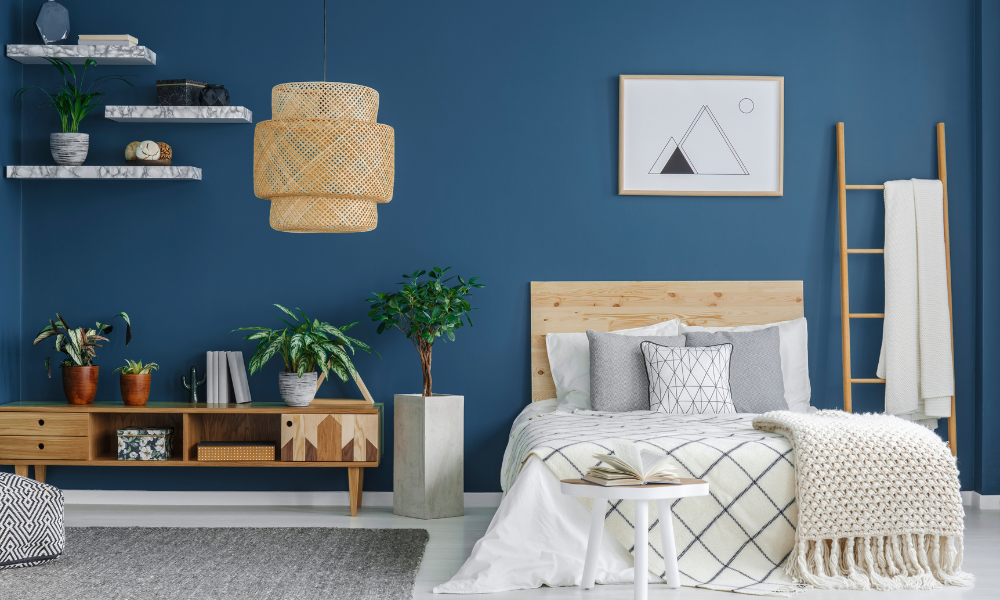In the bedding industry, a retailer’s focus is mattresses, pillows, toppers and adjustable bases. The color of the bedroom walls doesn’t usually come into the picture.
But a new study from print materials company Aura Print reveals the power of bedroom colors in achieving quality sleep, and this could be a great way for bedding RSAs to engage customers with an interesting topic and position themselves as sleep experts.
“The colors we surround ourselves with can have a profound impact on our mood, and most people know this, but what they don’t know is the effect on some biological functions such as sleep,” says Liam Smith, a color expert at Aura Print. “By using the right colors and patterns, you can significantly improve your sleep quality and overall well-being.”
Here are the top colors and tones Smith recommends for the bedroom:
1. Blue tones: Often associated with calmness and serenity, blue evokes feelings of tranquility, making it a perfect choice for a bedroom. Studies suggest blue can reduce heart rate and blood pressure, creating an ideal setting for sleep.
2. Green tones: Green, linked to nature and renewal, promotes restful sleep by providing a sense of stability and comfort, easing the transition into sleep.
3. Warm colors: Soft reds or oranges can encourage sleep by supporting melatonin production. However, brighter reds may increase energy and alertness, so use them sparingly.
4. Neutral tones: Soft beige and light gray shades create a calm, peaceful atmosphere, ideal for a minimalist decor that promotes relaxation.
Smith also offers expert tips for a sleep-inducing bedroom design:
1. Choose calming colors
Stick to soothing blues and greens for walls, bedding or accent pieces. Research suggests that blue hues lower heart rate and reduce stress, while green evokes balance and tranquility.
2. Incorporate soft lighting
Pair bedroom colors with warm, dim lighting in the evening to enhance relaxation. Soft, amber-toned bulbs or dimmable lamps help signal to your body that it’s time to wind down.
3. Opt for natural patterns
Choose designs that mimic natural elements, such as leafy patterns, clouds or water, to bring serenity into your bedroom.
4. Avoid overly stimulating colors
Bright red, neon orange or other stimulating colors may increase heart rate and alertness, making it difficult to relax before sleep. Reserve bold shades for accents.
Mattress retailers likely won’t have any luck adding paint to their product mix, but they can use this information to get comfortable with customers and help them find the best mattress for their bedroom.




